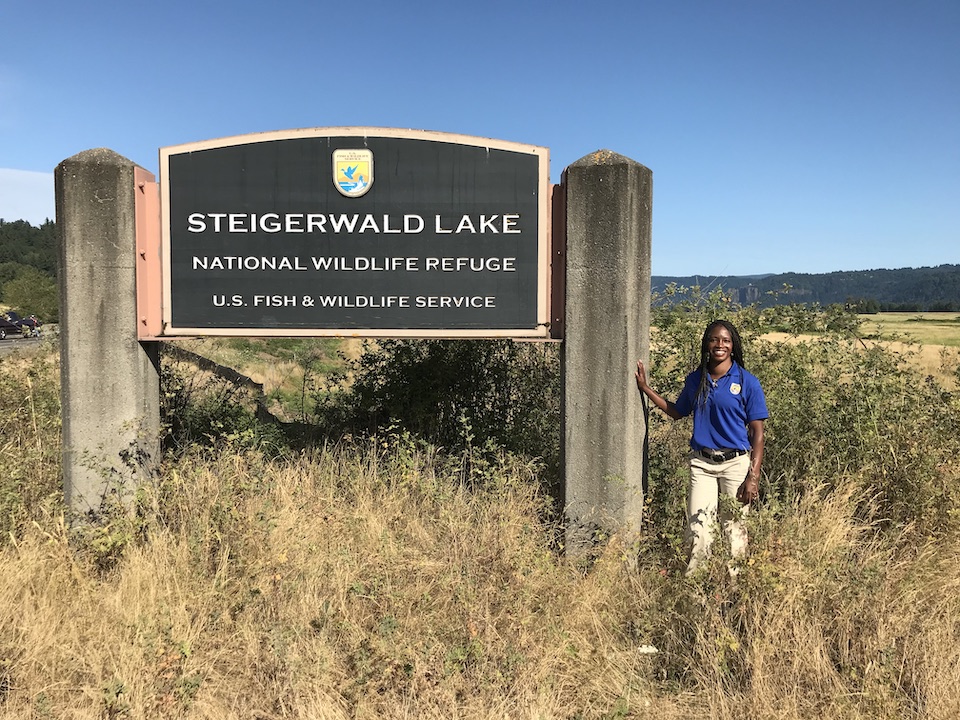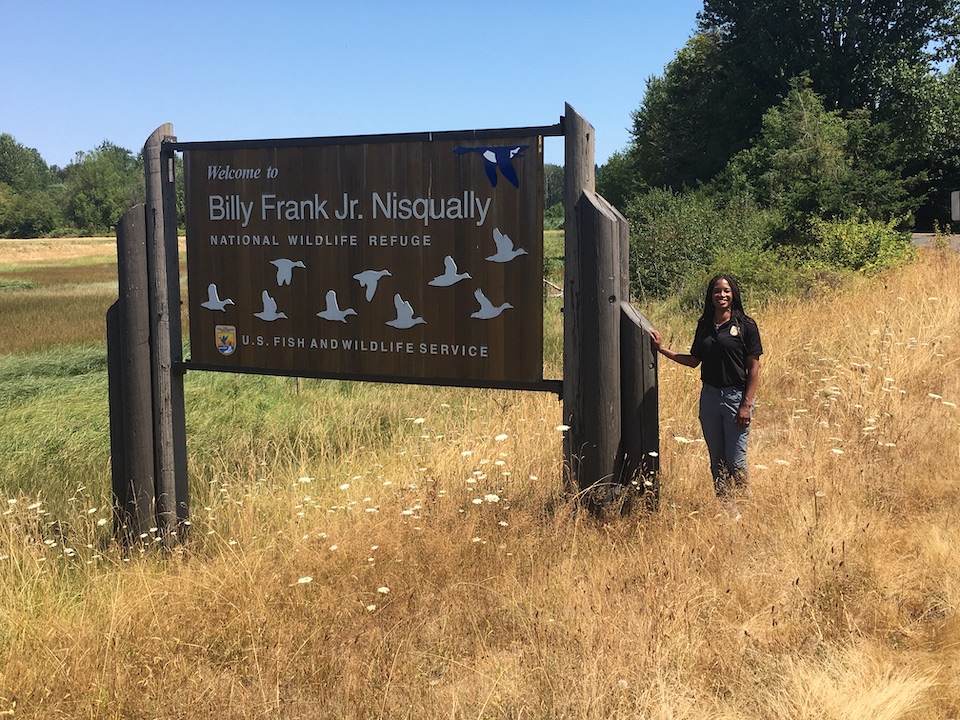The United States Fish and Wildlife Service director, Aurelia Skipwith, took time from a busy day of touring National Wildlife Refuges and National Fish Hatcheries in western Washington state to discuss the hunt/fish rule that opens more than 2.3 million acres of wildlife refuges and hatcheries to the public. At the end of a long day, she hopped on a phone call with me to discuss what it means for our nation and why she is grateful to work toward this goal. Read the release, issued on Aug. 18, 2020.

History of Aurelia Skipwith
Director Skipwith was confirmed by the U.S. Senate on Dec. 12, 2019. According to a press release issued by the USFWS, she brings a wealth of work experience and education to this new role: “Ms. Skipwith has served as the Deputy Assistant Secretary of Fish Wildlife and Parks since April 2017. Previously, she served as Assistant Corporate Counsel at Alltech, Inc., an all-natural animal nutrition company that operates worldwide and has the world’s largest algae production system. She then became general counsel at AVC Global, an agricultural logistics and financing firm that she co-founded. Skipwith earned her B.S. in biology from Howard University, M.S. in molecular biology from Purdue University, and J.D. from the University of Kentucky College of Law.”
It sounds like this new rule has been in the works for about 2 years?
Since the president came onboard and the Dept. of Interior and with Secretary Bernhardt [Dept. of the Interior], we have been focused on opening more lands for hunting and fishing. Since 2017, we have been seeing increases. Last year we opened 1.4 million acres and this year, we proposed 2.3 million acres. It’s exceptional to be able to open it for access … we looked at what our regulations were, so that we didn’t have regulations that were duplicative. We streamlined it so that it makes it easy for people for hunting and fishing.
I imagine this took collaboration among many people?
It took an army. We have 10 Hunt Fish Chiefs, and someone that is head of that as well. They worked with all the refuges, as well our fish hatcheries. We have 568 units that are refuges and 70 fish hatcheries. So, these Hunt Fish Chiefs were going out into the regions, looking at each of those refuges, figuring out ways to open more acres for hunting and fishing, finding out opportunities where there were new species that we could add to the list for hunting that we previously didn’t have. … We looked at some of the regulations that would provide more opportunities for hunting, what the state has that we didn’t have – that aligned with a neighboring piece of property and what it was doing.
Did you start working on this expansion rule when you were the Deputy Assistant Secretary for Fish and Wildlife and Parks at the Department of the Interior?
I was in the office above the USFWS, and in that office we were working out what is the policy of the 2 agencies. Since Pres. Trump and Sec. Bernhardt came in, we’ve been looking at each season and how do we provide more opportunities. It’s been a theme with Pres. Trump and Sec. Bernhardt for providing opportunities for public access. It’s been at the core for when I came in during 2017.

It’s like a positive injection of a vitamin for people in this country to enjoy. Will you hire more people as a result of this expansion?
Throughout this pandemic, the USFWS has been operating and we’ve still been hiring people to fill the needs throughout the Service. Where we see that there’s a need, we will have that vacancy. Especially during a time such as this, at the USFWS, we kept our lands open for the public to use. There’s only a small minority where we might have had to close a trail or had a refuge where land around us had to close, so out of respect for that, we closed our places. That was very minor. There’s no better place to social distance than a wildlife refuge. People seem to have rediscovered the outdoors and we don’t want them to forget about it. When this pandemic is over, we want them still to come out and visit us.
How many states does this rule affect?
We are providing this opportunity to 49 states.
On a personal level, you’re an angler, but are you planning to head out sometime soon to enjoy hunting or fishing?
In early March, I went down to Santa Anna, Texas, and went on a feral hog hunt and quail hunt. I will say, I really enjoyed the hog hunt. So, if I had a chance, I would do a hog hunt. It was interesting to see when you went out into the field, the amount of damage that these hogs do. I would choose some place like … Arkansas.
Is there anything else you’d like to add?
This administration is committed to providing the American people with access to their public lands. The key to all of this is hunters; they are the true conservationists. These lands and dollars that go into conservation would not be possible if it wasn’t for hunters. I thank them and commend them for all that they do, for it allows the USFWS to carry out its mission, as well as state agencies. … And when the final rules for the Duck Stamp came out, we wanted to acknowledge hunting, and so made the hunting theme permanent. So, going forward on all the duck stamps, you’ll see that theme – that is, to celebrate and acknowledge the contributions that hunting makes to conservation.
Read the press release regarding the expansion to 2.3 million acres.
Visit the USFWS online.
Publisher/Editor Barbara Baird is a freelance writer in hunting, shooting and outdoor markets. Her bylines are found at several top hunting and shooting publications. She also is a travel writer, and you can follow her at https://www.ozarkian.com. View all posts by Barbara Baird